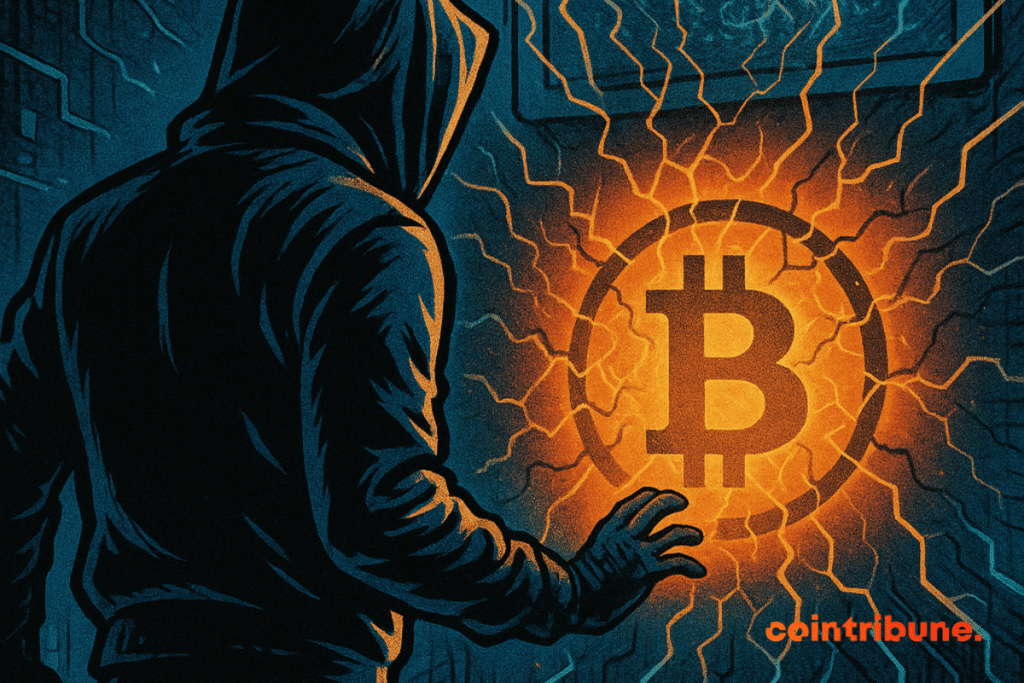Bitcoin and quantum threat: The "crazy theory" of SharpLink CEO about Satoshi Nakamoto
Since 2011, Satoshi Nakamoto has disappeared, leaving behind an unresolved enigma. However, some believe that the threat of quantum computing could force his return. This is the somewhat crazy but fascinating thesis of Joseph Chalom, co-CEO of SharpLink Gaming.

The quantum threat, a shock announced for bitcoin
Quantum computing is no longer science fiction. Researchers predict that over the next decade, these machines will be capable of breaking the cryptographic algorithms on which bitcoin relies. If that happened, current digital signatures would no longer be reliable. Result: “dormant” funds, especially those attributed to Satoshi, would become vulnerable, a fragility that symbolically resonates with the recent event of the theft of the Satoshi Nakamoto statue.
For some community members, the remedy would be a hard fork of the protocol, in order to make Bitcoin “quantum proof.” Others suggest freezing the most exposed coins, notably those linked to the mysterious creator. But such decisions divide, because they affect the very essence of Bitcoin: a network without censorship or central authority.
It is precisely this tension point that feeds Joseph Chalom’s theory. According to him, the day the network’s survival requires a clear stance, Satoshi could break the silence.
The “OG accounts” as a reappearance channel
Satoshi would not need to reveal his civil identity to make his voice heard. Chalom imagines a return via historical channels: an e-mail address, a post on Bitcointalk or, even more spectacular, the activation of an old wallet linked to the Patoshi pattern.
These wallets hold over one million BTC, about 121.9 billion dollars. A simple movement of these funds would be enough to shake the market and confirm, at least in part, that the bitcoin creator is still there, lurking. According to Forbes, such a fortune would place Satoshi among the 15 richest people worldwide. A detail that is not trivial, because the stake goes beyond technology: it touches power and influence.
Of course, the probability remains low. Most analysts consider the idea that Satoshi manipulates his old funds unrealistic. But the hypothesis has the merit of reminding us that the founder’s silence is not proof of absence.
The Satoshi myth, between speculation and legacy
Since 2008, theories abound: Peter Todd, Hal Finney, Nick Szabo, Elon Musk… each has been successively designated as the father of bitcoin. Even HBO tried the exercise in a documentary in 2024, advancing the Todd hypothesis, quickly dismissed by the community.
What remains, ultimately, is not so much the face of Satoshi as his legacy. The Bitcoin network still runs 17 years after its launch, without an official leader. But the specter of quantum computing could reshuffle the cards. Facing an existential threat, an intervention, even symbolic, from the creator would change the game.
Maybe Satoshi will never appear. Maybe he is waiting for the moment when Bitcoin must choose between continuity and radical transformation. In any case, Joseph Chalom’s idea fuels a certainty: the legend of Satoshi Nakamoto is not finished weighing on bitcoin’s future.
Maximize your Cointribune experience with our "Read to Earn" program! For every article you read, earn points and access exclusive rewards. Sign up now and start earning benefits.

Fascinated by Bitcoin since 2017, Evariste has continuously researched the subject. While his initial interest was in trading, he now actively seeks to understand all advances centered on cryptocurrencies. As an editor, he strives to consistently deliver high-quality work that reflects the state of the sector as a whole.
The views, thoughts, and opinions expressed in this article belong solely to the author, and should not be taken as investment advice. Do your own research before taking any investment decisions.